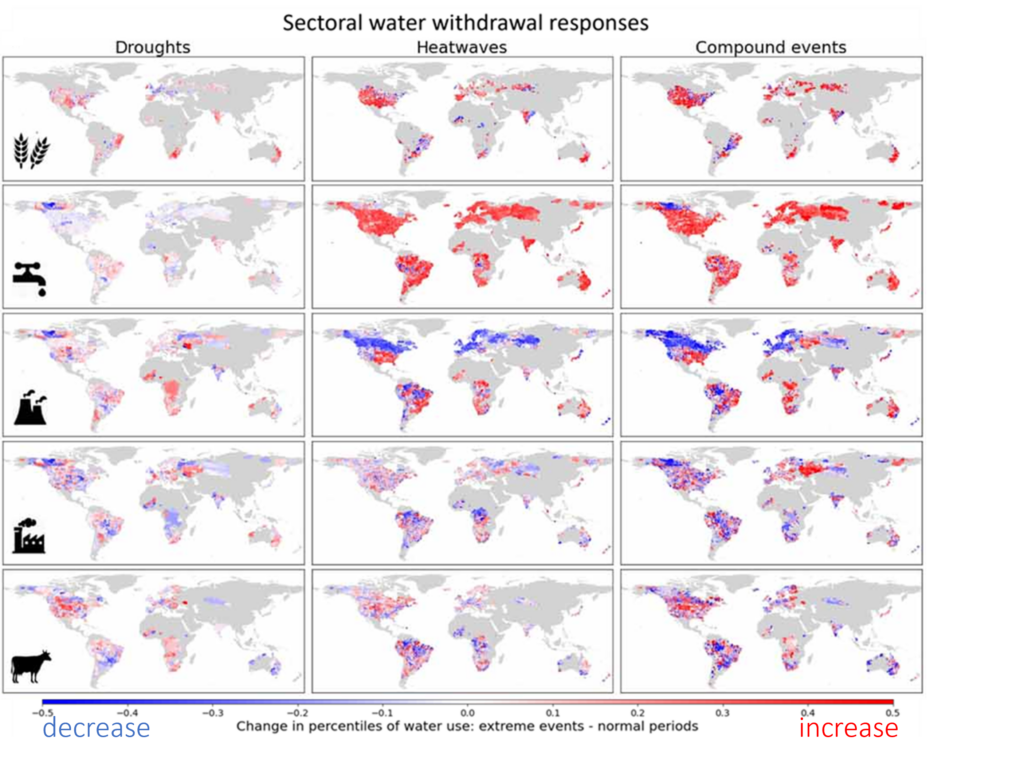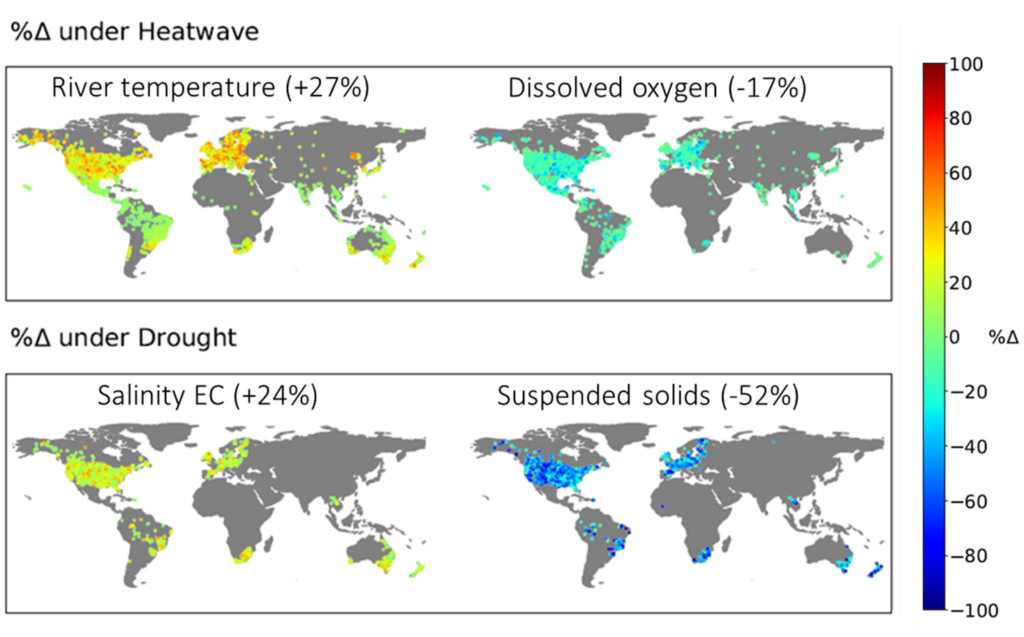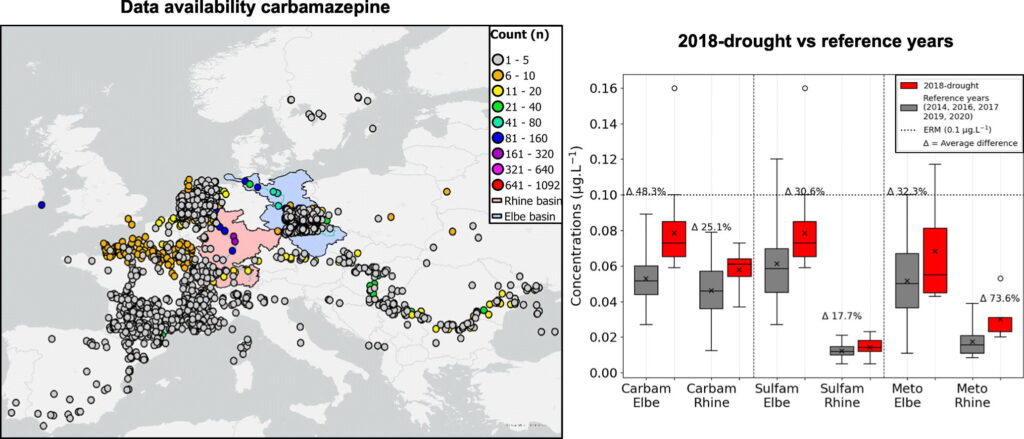VIDI project
Water scarcity under droughts and heatwaves: understanding the complex interplay of water quality and sectoral water use
Worldwide, two billion people suffer from water scarcity, and even more are affected during droughts and heatwaves. During these events, water scarcity is not only driven by decreasing water availability, but also by deterioration of water quality and increasing water use (e.g. irrigation, domestic, energy). These drivers are interrelated, for instance, decreasing surface water availability and increased sectoral water use adversely impact water quality. In turn, degraded water quality reduces the usability for sectors, thus increasing water scarcity. This interplay between water availability, use and quality is complex and poorly understood. With heatwaves and droughts occurring more frequently across the globe, there is an urgent need to improve water management plans. This requires fundamental understanding of water scarcity and the interrelation between its drivers.The aim of this VIDI project is to unravel water scarcity during drought-heatwave events by quantifying the interactions and feedbacks between surface water quality, sectoral water use and water availability. We analyse water quality and sectoral water use responses using in-situ and new satellite-derived monitoring data for recent droughts-heatwaves in river basins worldwide. Further, we are developing a globally-applicable water assessment framework coupling a newly-developed surface water quality model to a new sectoral water use and allocation model and to a hydrological model. This model framework is used to quantify water scarcity under drought-heatwave events worldwide, including the full interactions between water availability, quality and sectoral use. The outcomes will provide critical knowledge for regional water management strategies that will ‘reduce the number of people suffering from water scarcity by 2030’ as urgently required by the UN’s Sustainable Development Goal 6.
Key results
Stronger responses in sectoral water use are found under heatwaves and compound drought- heatwave events, compared to droughts solely.
Domestic and irrigation use are prioritized over other sectors (livestock, thermoelectric and manufacturing water use

Spatial patterns in sectoral water withdrawal during droughts, heatwaves and compound drought-heatwave events for 1990-2010. Based on Cárdenas Belleza et al (2023)
Droughts and heatwaves overall result in a deterioration in river water quality

Spatial patterns in river water quality responses during droughts and heatwaves based on analyses of monitoring data of 314,046 monitoring stations for 1980-2021. Based on Graham et al. (2024)
Drought resulted in increased concentration of several pharmaceuticals (carbamazepine, sulfamethoxazole and metoprolol) in the Rhine and Elbe rivers mostly driven by less dilution.

Data availability and impact of 2018-drought on concentrations of several pharmaceuticals in the Elbe and River rivers. Based on Lentz et al. (2024)

